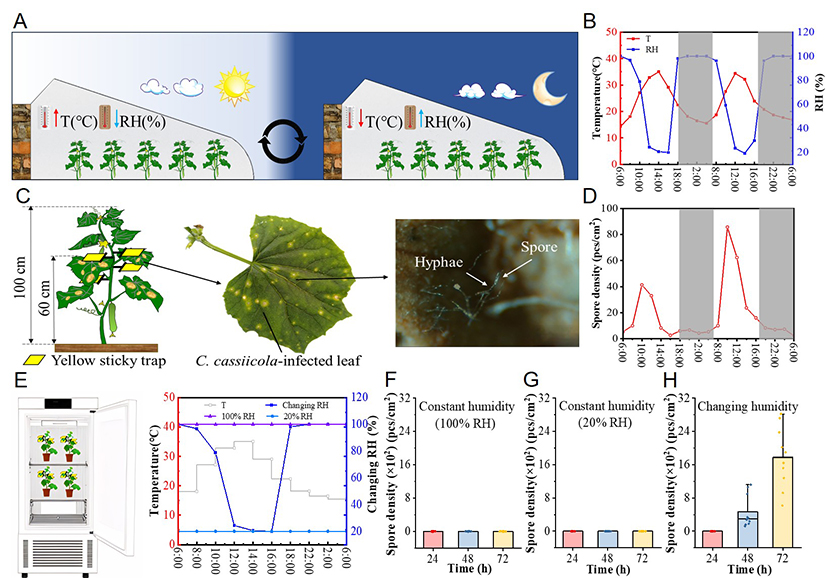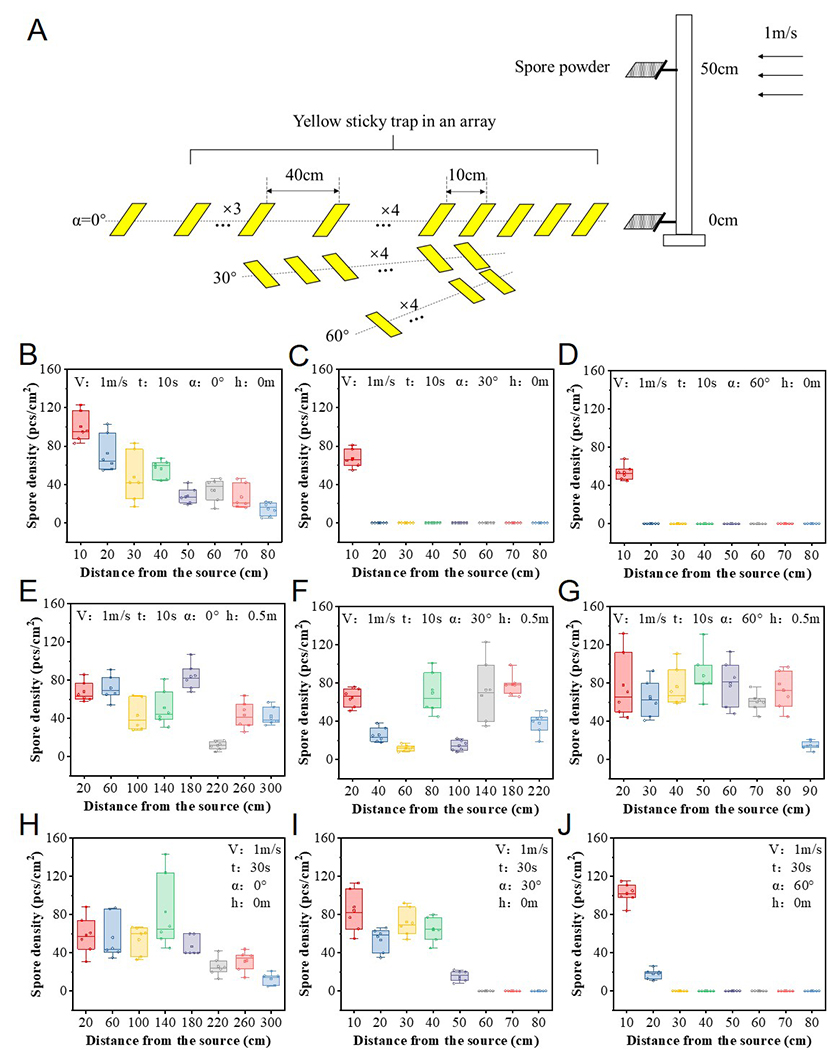While greenhouse vegetable cultivation thrives, disease issues persist, causing significant economic losses for farmers and posing risks to vegetable production. Recently, Li Baoju’s research team from the Vegetable and Flower Research Institute of the Chinese Academy of Agricultural Sciences published a study titled “Diurnal Release of Airborne Pathogen Spores in Greenhouses via the Synergistic Effects of Relative Humidity and Wind” in the Advanced Science. This research uncovers the mechanisms behind the rapid spread of greenhouse diseases. Let’s explore how these microscopic pathogen spores wreak havoc in greenhouses.

Temperature and Humidity Fluctuations – The “Trigger” for Pathogen Spores Release
The greenhouse environment provides unique conditions for pathogen spore dispersal. Taking cucumber Corynespora target leaf spot as an example, spores of Corynespora cassiicola absorb water and swell under high humidity. As humidity decreases, osmotic pressure changes cause the cell wall to contract elastically, generating gas bubbles. This process resembles a compressed spring releasing energy, driving the spores’ twisting and jerking. The study found that spore release surges when relative humidity (RH) drops below 52%. It’s as if the spores have a “humidity sensor”–once humidity decreases, they eagerly “jump” out to begin their dispersal journey.

Fig. 1 Effects of humidity on C. cassiicola spore release under greenhouse and artificial climate chamber conditions.

Fig. 2 Microscopic characterization of humidity-dependent spore release behaviors in C. cassiicola and other fungi.
Wind – The “Propeller” for Spore Dispersal
Spore release is only the first step; wind is the critical “propeller” enabling long-distance spread. Even without wind, spores detach from chains under humidity fluctuations. However, wind carries them from infected to healthy plants. Higher wind speeds extend dispersal distances: at 0.5 m/s, spores travel 30 cm, while at 1 m/s, they reach 80 cm. Spore release height also impacts distance – higher release points lead to farther spread, akin to tossing a paper into the air.

Fig. 3 Spore dispersal distances under varying wind speeds and spore source heights.
Colony Age – A “Hidden Factor” Influencing Dispersal
Colony age affects dispersal behavior. Older spores weaken in connectivity, becoming more easily dispersed by wind. For 3-day-old spore clusters, few spores are detected 10 cm from the colony. In contrast, 5- and 7-day-old clusters show significantly increased spore numbers and dispersal distances. Older spores at the chain's end have fragile septa, while younger spores near conidiophores remain firmly connected.

Fig. 4 Quantity and dispersal distances of C. cassiicola spores of different colony ages under identical conditions.
This study deepens our understanding of greenhouse disease transmission mechanisms. Insights into spore release and dispersal patterns aid in developing precise prevention strategies. For example, controlling humidity and wind speed in greenhouses can reduce spore spread. During outbreaks, stabilizing humidity and optimizing ventilation timing/strength can limit pathogen diffusion. Additionally, tailored monitoring systems for specific pathogens enable early warnings and targeted interventions. These findings provide scientific support for sustainable greenhouse agriculture and offer valuable references for managing diseases in other controlled-environment systems.
This work was funded by the National Natural Science Foundation of China (3277180759) and the National Key R&D Program of China (2023YFD1401200). Corresponding authors are Prof. Baoju Li and Prof. Tengfei Fan, with Ph.D. candidate Jiayi Ma as the first author.
Full article: https://advanced.onlinelibrary.wiley.com/doi/10.1002/advs.202501500